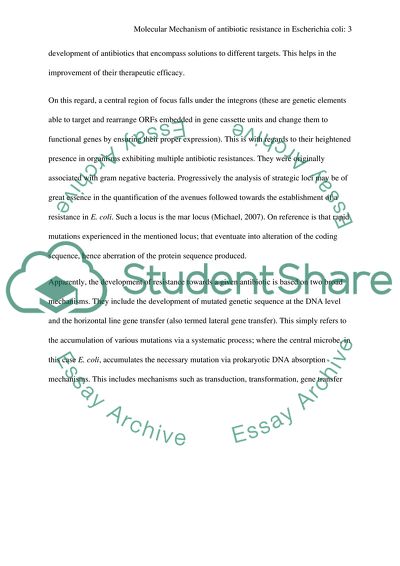Cite this document
(Molecular Mechanism of Antibiotic Resistance in Escherichia Coli Essay Example | Topics and Well Written Essays - 2000 words - 1, n.d.)
Molecular Mechanism of Antibiotic Resistance in Escherichia Coli Essay Example | Topics and Well Written Essays - 2000 words - 1. https://studentshare.org/biology/1791357-molecular-mechanism-of-antibiotic-resistance-in-escherichia-coli
Molecular Mechanism of Antibiotic Resistance in Escherichia Coli Essay Example | Topics and Well Written Essays - 2000 words - 1. https://studentshare.org/biology/1791357-molecular-mechanism-of-antibiotic-resistance-in-escherichia-coli
(Molecular Mechanism of Antibiotic Resistance in Escherichia Coli Essay Example | Topics and Well Written Essays - 2000 Words - 1)
Molecular Mechanism of Antibiotic Resistance in Escherichia Coli Essay Example | Topics and Well Written Essays - 2000 Words - 1. https://studentshare.org/biology/1791357-molecular-mechanism-of-antibiotic-resistance-in-escherichia-coli.
Molecular Mechanism of Antibiotic Resistance in Escherichia Coli Essay Example | Topics and Well Written Essays - 2000 Words - 1. https://studentshare.org/biology/1791357-molecular-mechanism-of-antibiotic-resistance-in-escherichia-coli.
“Molecular Mechanism of Antibiotic Resistance in Escherichia Coli Essay Example | Topics and Well Written Essays - 2000 Words - 1”. https://studentshare.org/biology/1791357-molecular-mechanism-of-antibiotic-resistance-in-escherichia-coli.


